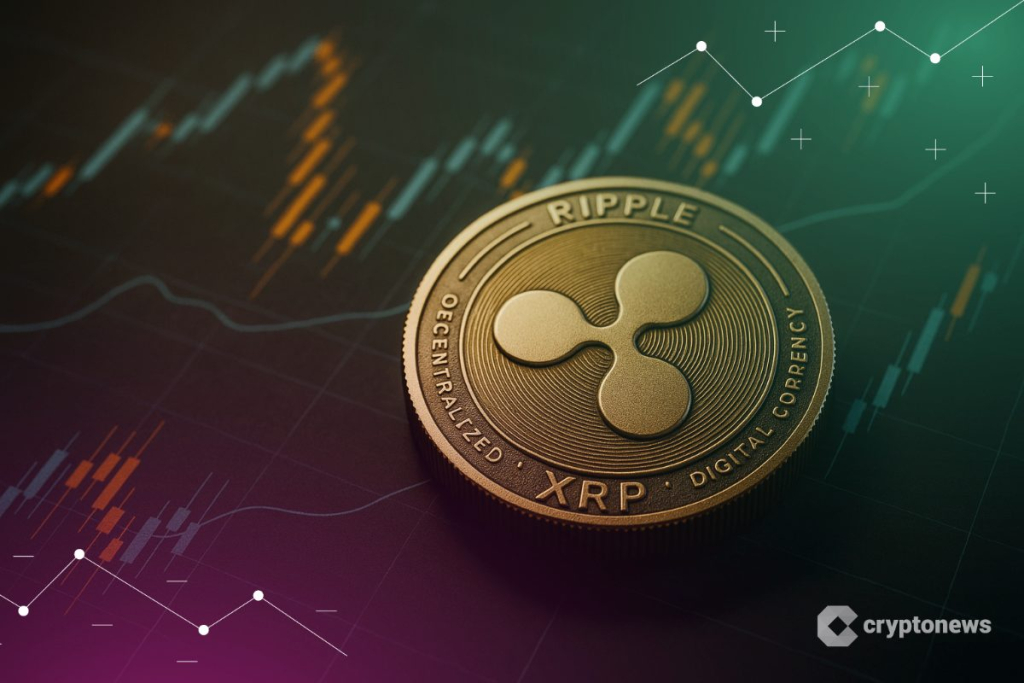Summary Points:
The XRP Ledger has launched its Ethereum Virtual Machine (EVM) sidechain on testnet, with plans for a mainnet release anticipated in the second quarter of the year.
This new sidechain enhances Ethereum smart contract functionality on XRPL by utilizing wrapped XRP as its gas token.
Additionally, the XRPL has broadened its stablecoin offerings by introducing EURØP and USDB, aimed at fostering regional adoption of digital currencies.
The XRP Ledger is set to officially introduce an Ethereum Virtual Machine (EVM) sidechain in Q2, which signifies a significant advancement towards achieving compatibility with Ethereum.
This development was announced by Ripple’s Chief Technology Officer David Schwartz during the Apex 2025 conference in Singapore, in collaboration with blockchain firm Peersyst.
The EVM sidechain aims to merge the XRP Ledger’s efficient low-cost transaction capabilities with Ethereum’s extensive smart contract functionalities.
EVM Sidechain Now Active on Testnet
Powered by the evmOS software stack, the sidechain is currently up and running in a test environment, with a mainnet deployment expected to follow this quarter after onboarding additional validators.
Unlike Ethereum-centric blockchains, the XRP Ledger lacks direct support for the EVM environment that supports a majority of decentralized applications.
The introduction of this sidechain seeks to bridge that gap while maintaining the efficiency of XRP. A dedicated bridge will connect the sidechain with the XRP Ledger mainnet, utilizing Axelar as the primary facilitator for asset transfers.
The one and only @JoelKatz and Ripple’s @jazzicoop announced the XRPL EVM is going live Q2 at Apex featuring some DeFi apps like @StrobeFinance @vertex_protocol, @SecurdLabs and @squidrouter building on it pic.twitter.com/EPhz1JcdiA
— Peersyst Technology (@Peersyst) June 11, 2025
Wrapped XRP will serve as the gas token for the EVM sidechain, allowing for the seamless execution of smart contracts while remaining within the XRP ecosystem.
Although the Flare Network already provides an EVM-compatible alternative for users of XRP, this initiative brings Ethereum integration directly into Ripple’s framework.
In a recent move, the XRP Ledger has also broadened its stablecoin options by introducing EURØP, a MiCA-compliant euro stablecoin from Schuman Financial, and USDB, a dollar-pegged token launched by Brazil’s Braza Group.
EURØP, which is backed by euros and protected by reputable institutions like Societe Generale, represents the first fully MiCA-compliant euro stablecoin on the XRPL.
On the other hand, Braza Group’s USDB, which is backed by both U.S. and Brazilian bonds, provides Brazilian users a reliable digital asset for transactions and hedging purposes.
XRP Under Fire Amid Ripple’s European Digital Euro Initiative
This criticism coincides with ongoing discussions about the possibility of the European Central Bank (ECB) adopting the XRP Ledger in its digital euro infrastructure.
Although the ECB has yet to confirm any formal association with Ripple or its XRPL, speculation has abounded in the cryptocurrency sphere.
Cardone has taken his criticism further, comparing XRP’s role in financial markets to a new virus and dubbing it “COVID-19 Part Two in finance.”
He cautioned that ongoing support for XRP equates to endorsing “European warmongers,” positioning XRP’s objectives as a threat to liberty rather than a stride towards financial innovation.
These remarks prompted swift backlash from the XRP community, which condemned Cardone’s comments as inflammatory and unsubstantiated.
Countering Cardone’s assertions, Robert Doyle, known as Crypto Sensei online, remarked that “there is no official confirmation” regarding Ripple technology’s involvement in the digital euro project.
He underscored that while the ECB is investigating CBDCs, no conclusive decisions have been made about the underlying technology.
The post XRP Ledger Eyes Q2 EVM Rollout — Is Ripple About to Bridge to Ethereum? appeared first on Finance Newso.


























